Warszawa II (3 page)
Authors: Norbert Bacyk

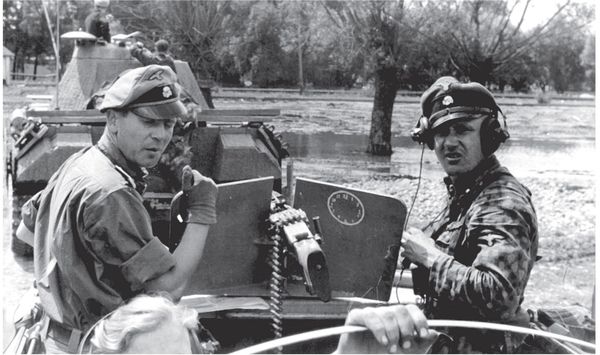
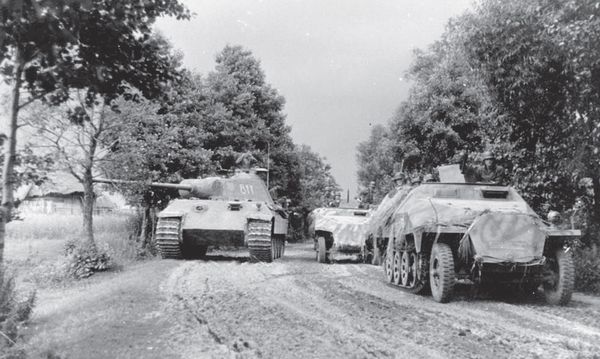
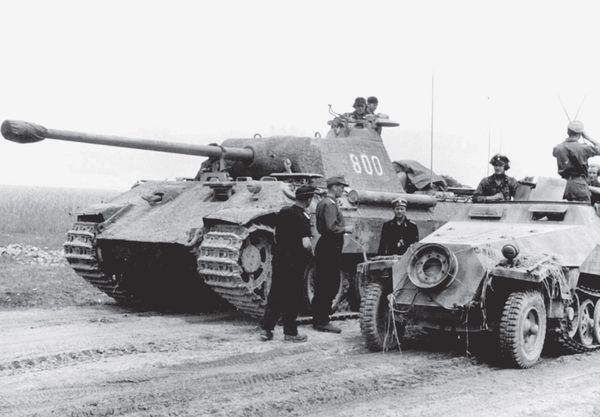
In the meantime, on July 13, the battle-strong 1st Ukrainian Front began its offensive. Its commander, Marshal Ivan Konev had under his command six infantry armies and three tank armies. In addition, he also had at his disposal three individual tank and cavalry corps. After a few days, the attacking troops broke through the frontline, and by July 18, these forces reached the Soviet frontline troops in the Bug River area around Dobraczyn. The weakened German 1st and 4th Panzer-Armies did not manage to halt the Soviet forces, which over the days following July 20, proceeded to cross over the upper Bug River on a broad front with an entire four armies, two of which were tank armies. In addition, prior to July 22, Soviet units encircled and annihilated a couple of enemy divisions a little farther east along the river outside Brody.
In the middle of July 1944, as a result of the 1st Ukrainian Front's activation and the 1st Belorussian Front's offensive, which had now been underway for a month, the last line to quiet was on the Eastern Front's central section was an area east of the Bug River's central flow. On the German side, the right flank was manned by the 2nd Army (East of Brest) and at the outermost reach of its left flank, by the 4th Panzer-Army (between Brest and Volodmyr Volynskj â the VIII Armee-Korps and the LVI Panzer-Korps). As noted earlier, the 2nd Army at this point had managed to avoid any crushing Soviet onslaughts as they fortunately remained outside the scope of operation “Bagration's” first phase. Now, with their comrades in the north having suffered such heavy losses, they slowly drew back towards the west. The situation was similar on the 4th Panzer-Army's left flank. They also occupied positions directly across the 1st Belorussian Front's, still resting, left flank. The remainder of this German tank army was already engaged in fighting on the Volynia Plateau against the heavy attacks of Marshal Konev's forces. This situation was completely changed on July 18, when Marshal Rokossovskij strengthened the offensive with the remaining sections of his combat forces. This course of events was to have a decisive effect in connection with Operation Bagration's coming attacks directed against Warsaw.
Transport vehicles from the 3rd SS-Panzer-Division “Totenkopf” on the move in July 1944, east of Warsaw. (Leandoer & Ekholm archive)
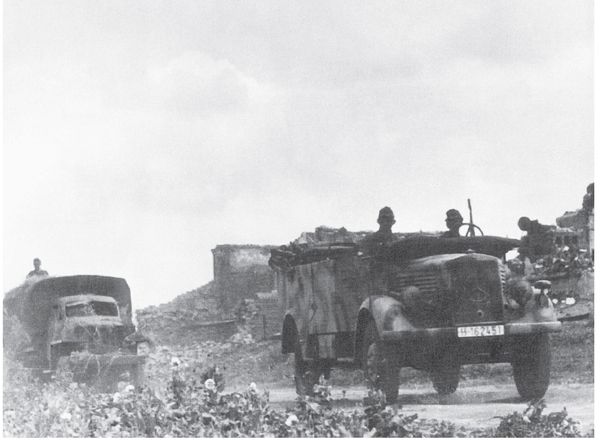

Personnel from Panzer-Regiment 35 carry out maintenance work on a PzKpfw IV ausf H. (Leandoer & Ekholm archive)
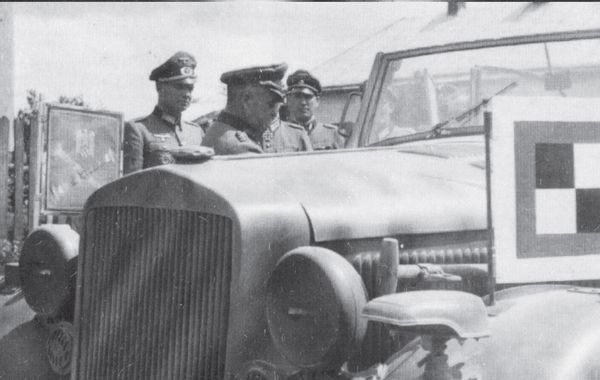
A picture of particular interest! It depicts a m. gl. Einheits-Pkw Kfz 21 which would appear to be the personal transport car of a Field Marshal who is also the commander of the Heeresgruppe. The flag on the car's left side indicates this, the flag on the right indicates the aforesaid rank. The Field Marshal standing in profile behind the car is none other than Walther Model, Commander of Heeresgruppe “Mitte” in the Summer of 1944. (Leandoer & Ekholm archive)
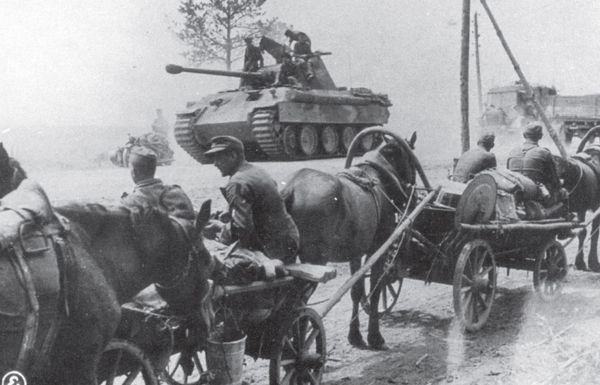
A Panther Sd kFz 171 ausf A passes an infantry unit on the march toward the front. Note the military police in the background on the side of the road. The Panther is from the 3rd SS-Panzer-Division “Totenkopf” in the vicinity of Warsaw, July 1944. (Leandoer & Ekholm archive).

A column of medium tanks PzKpfw IV's Sd Kfz 161/1.
July 18-28, 1944.
O
n July 17, only two weeks before the Warsaw Uprising was to break out; Warsaw was still a long way behind the Eastern front, which was some 200 kilometres distant. The Polish capital city lay to the rear of the German 2nd Army under the command of General Walther WieÃ. At that point in time, troops from this Army began to leave southwest Belorussia flanked to the north by enemy forces under the command of General Rokossovskij. Directly east of General WeiÃ's forces, General Pavel Bjelov's 61st Army began to exert pressure while the following three armies drew forward in the general direction of Hajnówka: General Romanjenko's 48th Army, General Batov's 65th Army, and General Lutjinskij's 28th Army, along with two tank corps, a mechanised corps and a cavalry corps (the 1st Tank Guards Corps, 9th Tank Corps, 1st Mechanised Corps, and the 4th Cavalry Guards Corp). The Germans tried to set up a new defensive position along the Grodno â Hajnówka â Brest line, but on July 17, the opposition wrecked this plan by attacking and breaking through the front in the area around the BiaÅowieża forest. The German command, which already controlled the situation between Kaunas and Brest, had planned to nullify this breach by initiating a number of counterattacks, but the offensive that was launched on the following day from the 1st Belorussian Front's left flank, totally laid waste to these plans.
It might appear that Marshal Rokossovskij during the fighting up to this point had already made use of the greater part of his combat strength. But in actuality, this was the first time the Soviet forces had set all their reserves into action. The make up of the 1st Belorussian Front's left flank, which was located along the PrypeÄ â marsh area â Kovel line, included General Vasil Popov's 70th Army, General Nikolaj Gusiev's 47th Army, General Vasil Tjujkov's 8th Army Guard, Genral Siemjon Bogdanov's 2nd Tank Army, General Zygmunt Berling's, 1st Polish Army, General Jusjtjuk's 11 th Tank Corps, General Krjukov's 2nd Cavalry Guards Corps and General
Konstantinov's 7th Cavalry Guards Corps. All told, these forces mounted to a total of some 416,000 soldiers, 8,355 artillery pieces, mortar and rocket launching ramps, and 1,748 armoured vehicles, (of which 665 were tanks, and 145 tracked artillery vehicles from the 2nd Tank Army). The offensive was supported from the air by 1,465 combat planes from General Fjodor Polunin's 6th Air Army.
On July 18, the Soviet Marshal launched the attack south of Brest with the 8th Army Guard and the 47th and 69th Armies. The assault was aimed at the VIII Army-Corps' sector within the 4th Panzer-Army. This corps was composed only of three divisions, one of which was a Hungarian reserve division. As a result, the troops of the VIII Army-Corps were quickly cut down. By July 20, the attackers had already seized two tactical bridge positions along the Bug and had soon dispatched the 11th Tank Corps and 2nd Cavalry Guards Corps to these locations; In addition, during the course of the attack, the 69th Army had defeated the LVI Panzer-Corps of the 4th Panzer-Army (the 26th, 253rd. and 342nd Infantry Divisions and the 1st Schijäger-Division). Here, the Soviets also met with success in driving their weakened enemy back across the river. At that very moment, the entire German front with the 4th Panzer-Army began to collapse, since the 1st Ukrainian Front, whose offensive had been underway for five days, was now able to link up with the 4th Belorussian Army's left flank which, in turn, had now also begun to be active. At the same time, which is to say, on July 20, an assassination attempt was made on Hitler which led to a state of complete chaos within the German High Command.
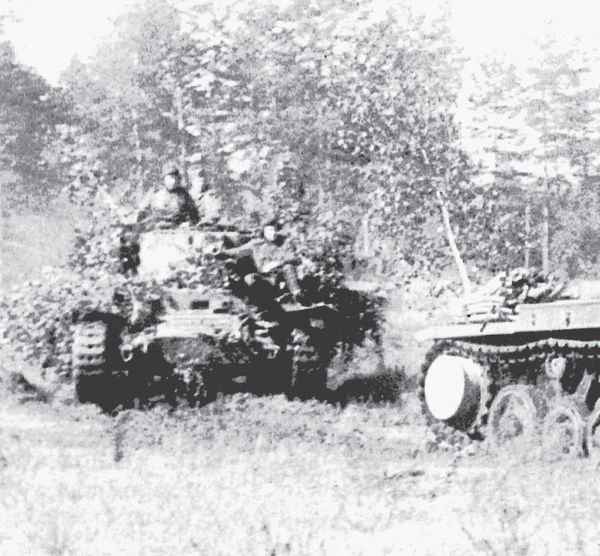
”Valentine” tanks, model Mk IX, from the 5th Tank Army in Belorussia, July 1944. (RGAKFD)
In the situation that now prevailed, the 2nd Army was the only German combat force with any room to manoeuvre. It had been able to retain much of its combat strength. When the Soviet forces, now in the forests surrounding Lublin, began their attack operations, so too began the 4th Panzer-Division, under the 2nd Army, and the 5th SS-Panzer-division “Wiking” supported by the 102nd Infantry-Division and the 541st Grenadier-Division, to launch intensive counter-attacks outside Czermecha.
But this concentration of strength north of Brest actually suited the commander of the 1st Belorussian Front perfectly, because his command's main assault forces were just then crossing the Bug River between WÅoda and CheÅm. Marshal Rokossovskij's plan, after broadening the bridge emplacements, was to bring the 2nd Tank Army into the fighting and order it to attack in the direction of Siedlce. In this way, his front's left flank, with two corps from the 4th Panzer Army having been beaten down, could strike against the rear units of the 2nd Army. Then, after the planned consolidation of the attacking armies from the right flank outside Hajnówka, a large portion of General WeiÃ's army would then be encircled outside Brest. Wholly unexpected, on July 21, Stalin ordered that General Bogdanovitj's tanks were not to roll on towards Siedlce, as per east of Warsaw. the elegant plan that had been drawn up before the summer offensive, but instead, towards Lublin. The dictator wanted, as quickly as possible, to control the largest city on ethnically Polish territory, since it was there he had thought to create the marionette-like Polish Committee for National Independence (PKWN). STAVKA therefore issued an order to Rokossovskij to capture Lublin no later than July 27, as “the political situation and the democratic independent interests of Poland acutely required this.” Given such an order, behind which was hidden a power struggle between the communists and the Polish “London-government,” the commander of the 1st Belorussian Front didn't dare to polemise. The road to Siedlce was instead cut off by General Krjukov's newly organised rapid-response forces (the 11th Tank Corps and the 2nd Cavalry Guard Corps). This, of course, meant a weakening of the attack against the 2nd Army.
Two soldiers from the 4th Panzer-Division's armoured reconnaissance units observe the enemy from an appropriate distance. The vehicle they are operating from is either an Sd Kfz 250 or a 251, the man on the right is using an artillery observation scope. The picture is taken in July 1944, from an area east of Warsaw
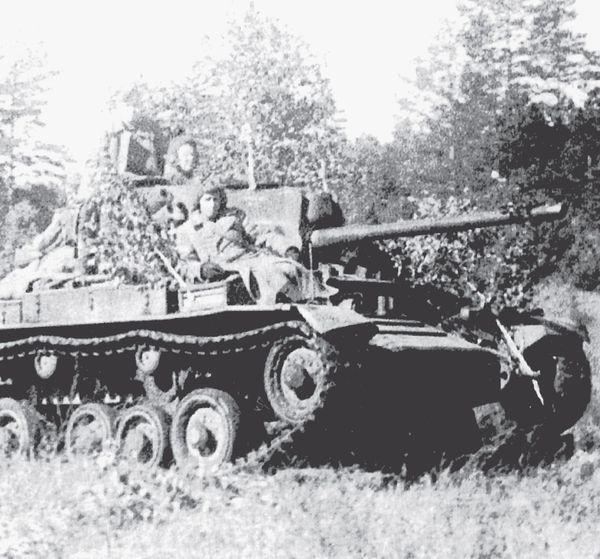
On July 22, the most vital Soviet forces had crossed the Bug and begun aggressive operations within the defence zone of the 4th Panzer Army. In the situation that now prevailed, the Germans were not capable of creating a new frontline down in the province of Lublin, not least because large contingents of the Polish Home Army had begun to swing into action against the German rear-guard. That same day, two units from the 2nd Tank Army, together with the 7th Cavalry Guards Corps, seized the town of CheÅm, which led Moscow-Radio to announce that the PKWN had now been established in the city. In reality, the committee had been established two days earlier, in Moscow. Now Stalin was able to inform the Western powers that at last he had a partner with whom he could discuss Poland's future. On July 23, he confirmed in a dispatch to Churchill:
An Sd Kfz 250/3 from Aufklärungs-Abteilung 4 advancing toward the enemy. The picture is taken in July 1944,
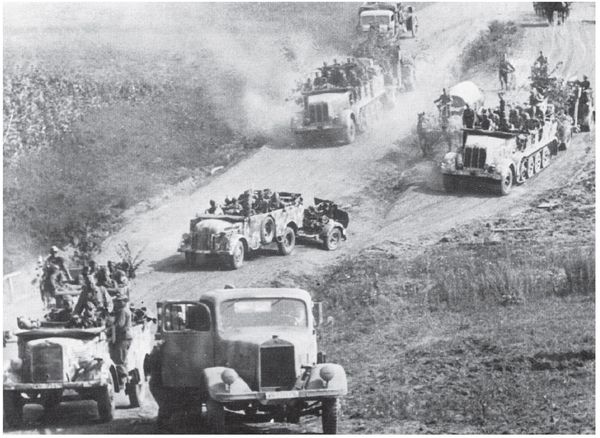
Elements of SS-Flak-Abteilung 3 on the march. One can see two 88s with tow-vehicles, a 2cm Flak 30 with a tow vehicle as well as several other vehicles in Eastern Poland, in July 1944. (All pictures: Leandoer & Ekholm archive).
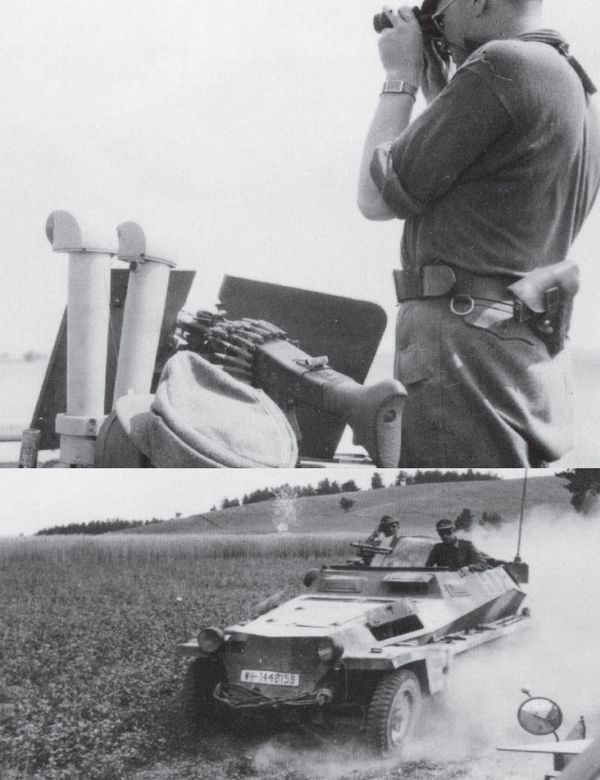
“The PKWN intend to build up their administration on Polish territory and I hope that this will succeed. We have not found any other forces in Poland capable of putting a Polish administration on its feet. The so-called underground organisations which are controlled by the Polish Government in London have been shown to be short- lived entities, wholly lacking in influence.”
At the very moment the British Prime Minister was reading these words, Polish Home-Army units, along with the 2nd Tank Army's frontline troops, commenced the storming of Lublin. The battle for the city began in the morning of July 23 and was already decided only two days later, on July 25, as a complete success for the attacking troops. And despite the establishment of a provincial delegation in Lublin for the Polish government, this seemingly legal government administration could not survive within the PKWN âs sphere of power. On July 26, this political body undersigned an agreement with representatives of the Soviet Army where it was stipulated that:
“all decision-making powers and complete responsibility for all questions related to the prosecution of the war within Polish territory where armed conflict is taking place as a result of the invasion of Soviet troops [â¦] shall reside with the Soviet Forces' highest commander.”
The same pattern of events soon unfolded in Lublin province as had taken place in Volynien and in the Vilnius area. Partisan units were cleverly disarmed by the NKVD (the forerunner of the KGB) or were forced at gun point to lay down their weapons. Officers and political delegates were arrested, while non-commissioned officers and common soldiers in the Home Army were incorporated into General Berling's army. Some of the representatives of this underground government went back to their secret operations.
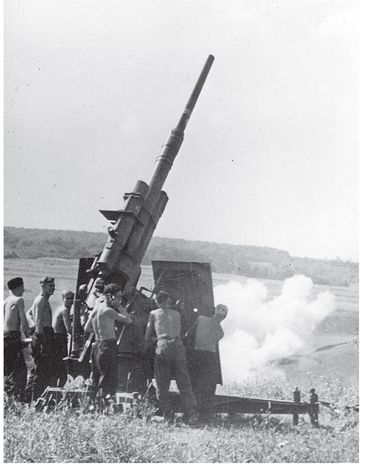
An anti-aircraft gun, model 8.8cm Flak 41, in a firing position in the Warsaw region, July 1944. (CAW)